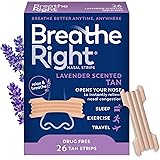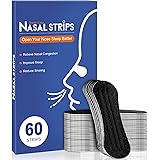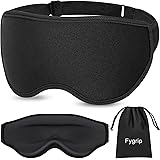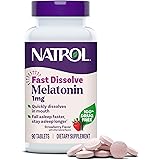According to the Centers for Disease Control and Prevention (CDC), over one-third of adults in the United States report getting less than the recommended amount of sleep. This widespread issue highlights a significant challenge: many people struggle to fall asleep quickly and consistently. If you’ve ever found yourself staring at the ceiling, wishing for slumber, you know how frustrating it can be. Thankfully, as Dr. Mandell demonstrates in the video above, sometimes the most effective solutions are surprisingly simple and natural.
The good news is that you don’t always need complex interventions to address sleep difficulties. Often, understanding and applying specific natural techniques can make a profound difference. This article will expand on the powerful acupressure point introduced by Dr. Mandell, offering a detailed guide and exploring complementary strategies to help you achieve restful sleep.
Unlock Deep Sleep: How to Fall Asleep Fast with Acupressure and Natural Methods
For those seeking to get to sleep quickly without medication, tapping into your body’s innate ability to relax is key. Acupressure, an ancient healing art, offers a gentle yet effective way to calm your nervous system and prepare your mind for sleep. The technique Dr. Mandell shares is an excellent starting point, designed for immediate application and noticeable results.
The Pisiform Point: Your Key to Falling Asleep Fast
The specific point highlighted in the video involves a small bone on the outside of your hand, known as the pisiform. This area is associated with energy pathways that can influence relaxation and sleep induction. Learning to stimulate this point correctly can become a valuable tool in your nightly routine, helping your brain wind down efficiently.
Detailed Steps for Acupressure Sleep Relief:
- 1. Locate the Pisiform Bone: Begin by identifying the outside edge of your hand, specifically near your wrist on the pinky finger side. Feel for a small, pea-shaped bone; this is your pisiform.
- 2. Find the Groove: Just next to this bone, you’ll feel a slight groove or indentation. This is the precise area you want to stimulate.
- 3. Apply Pressure: Using your thumb, press firmly into this groove.
- 4. Gentle Stimulation: Gently push your thumb in and out, rhythmically, for approximately twenty seconds. This motion helps to activate the point.
- 5. Sustained Hold: After the initial twenty seconds of in-and-out pressure, maintain a steady, firm hold on the point for one full minute. Focus on your breathing during this time.
Many individuals report feeling a noticeable sense of calm as they perform this technique. The goal is to signal to your brain that it’s time to shift from an alert state to a relaxed one, paving the way for you to fall asleep fast. Consistency is often key, so try incorporating this into your pre-sleep ritual.
Understanding Why This Works: The Mind-Body Connection
While the exact mechanisms of acupressure are still being studied, the general consensus points to its ability to influence the body’s nervous system. When you stimulate specific points like the pisiform, it’s believed to help release tension, improve blood circulation, and promote a state of deep relaxation. This can be particularly effective in reducing stress hormones that keep you awake.
The practice essentially helps to activate the parasympathetic nervous system, which is responsible for your “rest and digest” functions. In contrast, the sympathetic nervous system handles “fight or flight” responses, keeping you alert. By gently nudging your body into parasympathetic dominance, acupressure can make it significantly easier to wind down and get to sleep quickly. This natural shift helps calm the mental chatter and physical restlessness that often precede a restless night.
Beyond Acupressure: Holistic Strategies to Get to Sleep Quickly
While acupressure offers a powerful immediate solution, combining it with broader sleep hygiene practices can amplify its effectiveness. Integrating these strategies into your daily life creates an optimal environment for consistently achieving quality sleep. The journey to fall asleep fast often involves a multi-pronged approach.
1. Establish a Consistent Sleep Schedule
Your body thrives on routine, and your internal clock, known as the circadian rhythm, is no exception. Going to bed and waking up at the same time every day, even on weekends, helps to regulate this rhythm. A study published in the journal Sleep highlights how irregular sleep patterns can negatively impact sleep quality and overall health. Maintaining consistency signals to your body when it’s time to be awake and when it’s time to wind down, making it easier to drift off naturally.
2. Optimize Your Sleep Environment
Transform your bedroom into a sanctuary conducive to sleep. Ensure it’s dark, quiet, and cool. Research suggests that the ideal sleeping temperature is between 60-67 degrees Fahrenheit (15-19 degrees Celsius). Blocking out light with blackout curtains and minimizing noise can significantly improve your ability to fall asleep fast and stay asleep.
3. Power Down from Screens
The blue light emitted from smartphones, tablets, and computers can interfere with melatonin production, the hormone that regulates sleep. Aim to disconnect from all electronic devices at least an hour before bedtime. A 2014 study in the Proceedings of the National Academy of Sciences found that reading on an e-reader before bed significantly delayed sleep onset compared to reading a physical book. Give your brain a break from stimulating light to help it prepare for deep sleep.
4. Mindful Bedtime Rituals
Create a relaxing routine that signals to your body that it’s time to transition to sleep. This could involve taking a warm bath or shower, reading a physical book, listening to calming music, or practicing gentle stretching or meditation. These activities reduce cortisol levels and promote a peaceful state, helping you to get to sleep quickly. Consistency in these rituals can greatly enhance their effectiveness over time.
5. Watch Your Diet and Drinks
What you consume throughout the day and evening plays a significant role in your ability to sleep. Avoid caffeine and nicotine, especially in the late afternoon and evening, as they are stimulants that can keep you awake. Heavy, rich meals close to bedtime can also lead to indigestion and discomfort, disrupting sleep. Opt for lighter snacks if you must eat, and be mindful of alcohol consumption, which can initially make you feel drowsy but often leads to fragmented sleep later in the night.
By integrating the simple yet powerful acupressure technique from Dr. Mandell’s video with these holistic strategies, you empower yourself to take control of your sleep. Combining physical stimulation with thoughtful lifestyle choices creates a synergistic effect, training your body and mind to truly relax. This comprehensive approach is your path to not only fall asleep fast but also enjoy more consistent and restorative rest every night.








